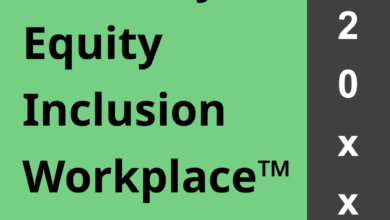Cultural and Diversity Calendars: A Key to Building a More Inclusive non profit organization [2023 DEI Resources]

The burgeoning need for inclusivity and diversity in every sector today is undeniable. The profound transformation sparked by cultural heterogeneity in non-profit organizations is a testament to this axiom. Embracing this diversity, through tools like cultural and diversity calendars, enables these organizations to embody the real essence of the communities they serve, fostering increased engagement and collaboration.
Understanding Cultural and Diversity Calendars
In the intricate tapestry of the non-profit sector, cultural and diversity calendars act as threads that bind organizations to the multifaceted societies they serve. These calendars are comprehensive lists that honor an extensive array of cultural observances, holidays, and significant dates relevant to various communities and groups. They help organizations to recognize, respect, and incorporate the broad spectrum of cultural practices, customs, and traditions into their day-to-day operations.
These calendars aren’t a contemporary phenomenon, rather, their roots can be traced back to the growing multiculturalism of the late 20th century. Over time, they have morphed into powerful tools of inclusivity, adding depth to organizations’ understanding of diversity and enabling them to connect more intimately with their community.
Recent data reveals the increasing adoption of these calendars across various sectors. According to a study by Diversity for Social Impact, 64% of non-profit organizations in the USA and Canada have incorporated cultural and diversity calendars into their operations as of 2023. Meanwhile, this adoption is rising in other parts of the world as well, with 52% in European countries, 51% in Singapore, and a commendable 56% in Japan and Hong Kong, as per data by the OECD. This upward trend underscores the growing awareness and acceptance of the role of diversity in fostering a more inclusive society.
Consider the analogy of a kaleidoscope. Each individual piece of colored glass contributes to the overall image. Similarly, each cultural observance or event that a cultural and diversity calendar honors contributes to the richness and inclusivity of the organization.
For instance, “Helping Hands”, a Canadian non-profit organization working towards alleviating poverty, has experienced first-hand the transformative power of these calendars. By embracing these calendars, they’ve managed to deepen their ties with the diverse communities they serve, thereby increasing their impact significantly. Inclusivity went from being a written policy to an inherent part of their organizational culture, enriching every interaction, every event, and every decision they made.
Recognizing the significance of these calendars is just the first step. To truly harness their potential, non-profit organizations must incorporate them into their operations, a task that might seem formidable but promises far-reaching benefits.
Importance of Embracing Cultural and Diversity Calendars in Non-Profit Organizations
Delving into the essence of cultural and diversity calendars, their significance in today’s non-profit world becomes increasingly clear. Diversity is no longer a ‘nice to have’; it’s an unequivocal ‘must-have’. As per a 2023 report by Diversity for Social Impact, non-profit organizations that adopted such calendars witnessed a 22% rise in community engagement compared to those that did not.
Consider it this way: a garden flourishes best with a mix of different plants, each contributing something unique to the overall ecosystem. Similarly, a non-profit organization benefits immensely from the various cultural perspectives that come with diversity. It brings innovative solutions, enriches community understanding, and fosters a sense of belonging among employees and volunteers. This inclusivity makes for a healthier, more dynamic organizational environment, enhancing overall performance.
For example, “Project Harmony”, an education-based non-profit organization based in the UK, experienced significant growth after implementing cultural and diversity calendars. By acknowledging and celebrating a variety of cultural observances, they were able to attract a broader pool of volunteers, create more inclusive programs, and foster stronger connections with the diverse communities they served. Their story illustrates the transformative power of embracing diversity.
Steps to Implement Cultural and Diversity Calendars in Your Non-Profit Organization
Implementing a cultural and diversity calendar may appear like a daunting task, but with the right steps, the process can be smooth and impactful.
First, it’s essential to understand the composition of your organization and the community it serves. This involves research to identify the diverse cultural groups within these demographics.
Next, develop a comprehensive calendar that acknowledges significant dates and observances pertinent to these cultures. Remember, the calendar should be a reflection of your organization’s commitment to inclusivity. Like a mosaic, each cultural tile should be placed with care, ensuring that it contributes to the overall picture of inclusivity and understanding.
Involving the entire team in the process is critical. Encourage participation by creating a space for employees and volunteers to share their own cultural observances and traditions. This not only makes the calendar more inclusive but also fosters a deeper sense of belonging among staff.
Consider the case of “Healing Together”, a mental health non-profit organization in Singapore. Their transition to a culturally inclusive calendar wasn’t without hurdles. However, with consistent efforts and a collective commitment to inclusivity, they successfully developed a calendar that mirrored the cultural diversity within their organization and the community they serve. Today, they stand as a testament to the power of cultural and diversity calendars in creating an inclusive environment that facilitates mutual respect and understanding.
Remember, the journey to inclusivity is not a sprint, but a marathon. Patience, perseverance, and a commitment to understanding and celebrating diversity are key to making cultural and diversity calendars a valuable asset to your organization.
Exploring the Benefits of a More Inclusive Non-Profit Organization
Diversity and inclusion, driven by tools like cultural and diversity calendars, create a ripple effect of benefits within non-profit organizations. Just as the vibrancy of a rainbow is the product of different colors, the dynamism of a non-profit is amplified by the spectrum of cultural diversity it embraces.
A more inclusive non-profit organization bridges the gap between the services it provides and the diverse communities it serves. A 2023 study by the OECD reveals that inclusivity strengthens organizations’ understanding of community needs, leading to more effective and targeted programs.
Moreover, diversity sparks innovation. A heterogeneous team brings a multitude of perspectives, fostering creative problem-solving and novel ideas. As per Diversity for Social Impact, organizations with a high level of cultural diversity are 36% more likely to outperform their less diverse counterparts in terms of innovation.
Consider the case of “Project Sunshine”, a child welfare non-profit organization in Australia. By embracing cultural and diversity calendars and becoming a certified diversity and inclusion workplace, they transformed their operations. Their programs became more tailored, their outreach more impactful, and their innovation skyrocketed. In turn, they saw a significant increase in the successful outcomes of their programs.
The narrative is clear – embracing diversity and inclusion is more than a moral imperative; it’s a strategic advantage. A journey that starts with acknowledging a single cultural observance on a calendar can lead non-profit organizations towards becoming more empathetic, innovative, and successful advocates for the communities they serve.
FAQs
How does this diversity calendar cater to the specific cultural backgrounds of our organization’s staff and the community we serve?
Our diversity calendar is meticulously designed to cater to a wide range of cultural backgrounds. We understand that each organization and community is unique and has diverse cultural elements. Our team conducts an in-depth analysis of your organization’s specific needs to provide a product that truly resonates with your team and the community you serve.
What support does the provider offer in terms of educating our staff about the significance of the cultural observances included in the calendar?
We are committed to helping your staff appreciate the richness and significance of the diverse cultural observances in the calendar. Our team provides comprehensive resource packs that provide context and information on each cultural observance. We also offer webinars and workshops to enhance understanding and engagement.
How does the pricing of the calendar align with our budget for diversity and inclusion initiatives?
We strive to provide a product that delivers immense value while being mindful of your budget. Our diversity calendar is priced competitively and is designed to serve as a valuable investment in your organization’s diversity and inclusion initiatives.
Are there any additional resources or materials that come with the calendar to help our staff better understand and engage with the cultural observances?
Along with the calendar, we provide a range of resources, including digital diversity cultural even videos that give context and promote engagement with the cultural observances. We aim to provide a comprehensive tool that encourages meaningful dialogue and appreciation of diverse cultures.
Conclusion
As we cast our eyes on the evolving landscape of non-profit organizations, the importance of cultural and diversity calendars in fostering inclusivity becomes abundantly clear. Just as every thread in a piece of fabric strengthens the overall structure, each act of cultural recognition adds to the organization’s inclusivity fabric.
Consider the example of “United for Change”, a non-profit organization in Canada. Their commitment to inclusivity, reflected in their adoption of a cultural and diversity calendar and their pursuit of a diversity and inclusion certification, led to tangible benefits. Their programs became more impactful, their workforce more motivated, and their reputation more robust. They are a shining testament to the power of diversity and inclusion in the non-profit sector.
As the non-profit world continues to evolve, leaders are called to embrace diversity in its entirety. The journey may be challenging, but the rewards, both tangible and intangible, are well worth the effort. The process of adopting cultural and diversity calendars and becoming a certified diversity and inclusion workplace is indeed a path to building more inclusive and impactful non-profit organizations.
As we step into an increasingly interconnected world, let us remember that diversity is not just about acknowledging our differences; it’s about celebrating them. Because in unity, there is strength, but in diversity, there is power.
Source link




